Nipple Function and Anatomy: Understanding the Nipple-Areola Complex
How does the nipple-areola complex function. What is the anatomy of the nipple and breast ducts. Why is nipple-sparing mastectomy becoming more popular. How does nipple development occur during fetal growth. What are common nipple variations and anomalies.
The Anatomy of the Nipple-Areola Complex (NAC)
The nipple-areola complex (NAC) is a crucial component of breast anatomy, consisting of two primary structures: the areola and the nipple. The areola is a circular area surrounding the nipple, typically 3 to 6 centimeters in diameter, and is usually located around the fourth rib. Its size and color can vary among individuals.
The nipple itself is a protruding structure at the center of the areola, containing several openings for milk ducts. These ducts play a vital role in lactation, allowing milk to flow from the mammary glands to the nipple’s surface.
Key Components of NAC Anatomy
- Areola: Circular pigmented area surrounding the nipple
- Nipple: Protruding central structure with milk duct openings
- Montgomery glands: Small glands on the areola surface
- Milk ducts: Channels for milk transport during lactation
Breast Duct Structure and Function
The internal structure of the breast is complex, consisting of glandular and adipose tissue supported by Cooper’s ligaments. The glandular tissue is organized into lobes, which are further divided into lobules containing clusters of alveoli.
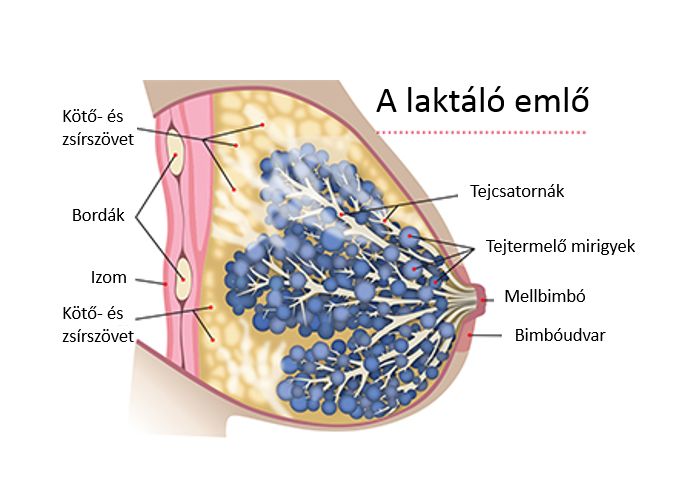
How are milk ducts arranged in the breast? Milk ducts form a network within the breast tissue, connecting alveoli to larger ducts that eventually merge into a single duct for each lobe. These ducts widen into lactiferous sinuses beneath the areola before narrowing at the nipple base and terminating at openings on the nipple surface.
Breast Duct Organization
- Alveoli: Milk-producing units
- Small ducts: Connect alveoli within lobules
- Larger ducts: Drain lobules and merge
- Main duct: Single duct for each lobe
- Lactiferous sinus: Widened area under the areola
- Nipple openings: Terminal points for milk release
The Evolution of Mastectomy Techniques
Over time, mastectomy procedures have evolved to improve both oncological safety and cosmetic outcomes. Modern techniques aim to preserve as much natural breast tissue and structure as possible while effectively treating breast cancer.
Why has nipple-sparing mastectomy (NSM) gained popularity? NSM procedures have become increasingly common due to their ability to maintain the natural appearance of the breast while still providing effective cancer treatment. This technique preserves the nipple-areola complex, which is crucial for patients’ self-esteem and body image.
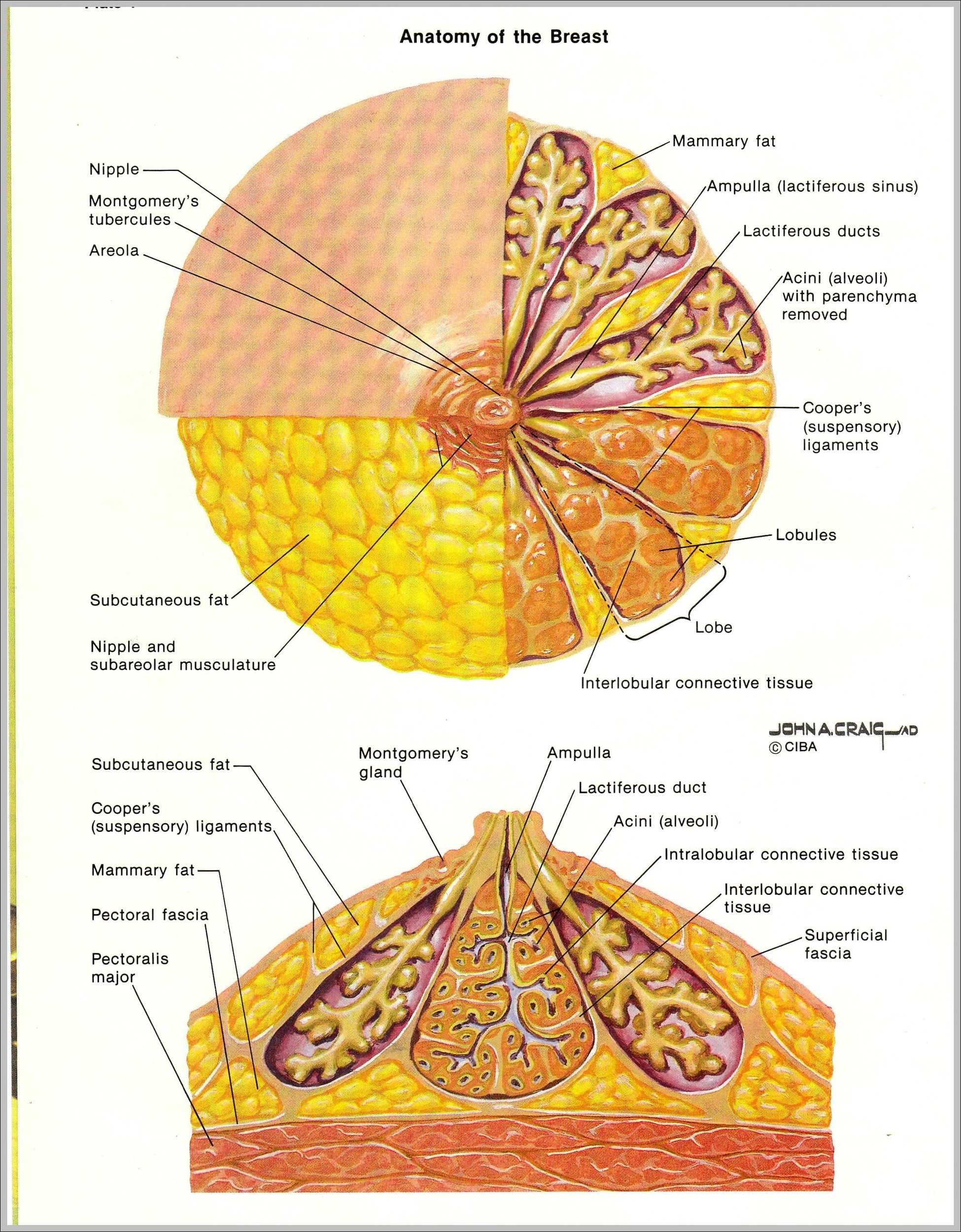
Benefits of Nipple-Sparing Mastectomy
- Improved aesthetic outcomes
- Better contralateral breast symmetry
- Preservation of breast identity
- Enhanced patient self-esteem
- Potential for immediate breast reconstruction
Embryonic Development of the Nipple and Breast
The formation of the nipple and breast begins early in fetal development. Understanding this process is crucial for comprehending normal breast anatomy and potential congenital anomalies.
When does nipple development begin in the fetus? Mastogenesis, or breast development, starts around the sixth week of gestation. By the eighth week, the mammary gland begins to form from a thickening in the epidermic “milk line” in the area of the future breast.
Key Stages in Nipple and Breast Development
- Week 6: Initiation of mastogenesis
- Week 8: Formation of mammary gland primordium
- Week 31: Occlusion of papillary sac, forming the NAC
- Birth: Appearance of the nipple
Common Nipple Variations and Anomalies
Nipple anatomy can vary significantly among individuals, and some people may experience congenital anomalies affecting the nipple-areola complex.
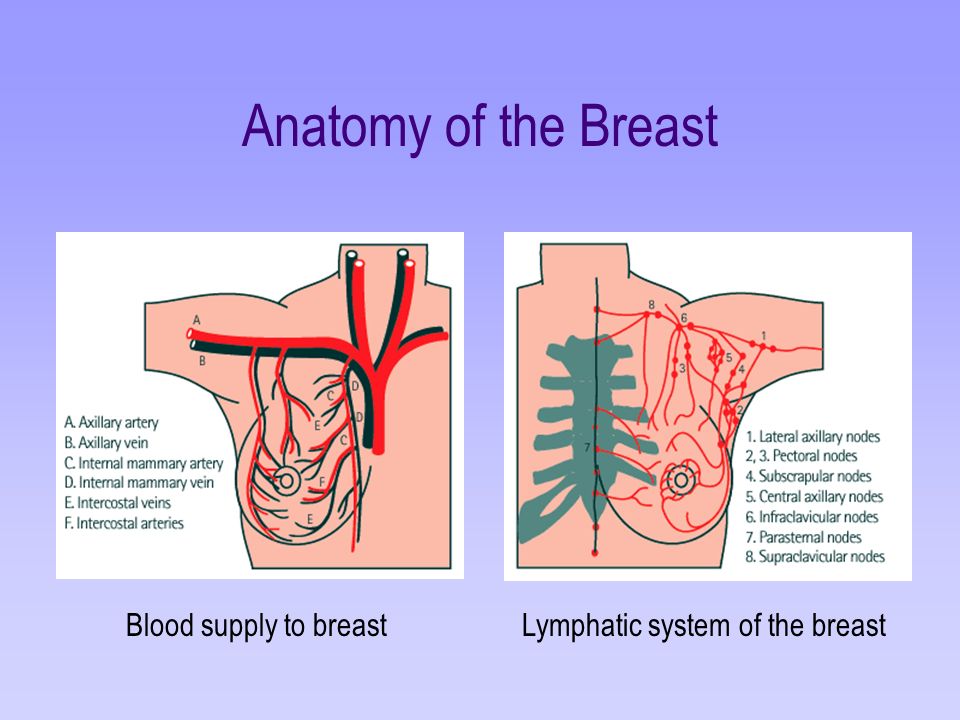
What are some common nipple variations? Nipple variations can include accessory nipples, inverted nipples, and congenital absence of nipples or breast tissue. These conditions may occur in both males and females and can sometimes be associated with underlying syndromes or genetic factors.
Types of Nipple Anomalies
- Accessory nipple: Extra nipple tissue, usually along the milk line
- Athelia: Congenital absence of the nipple-areola complex
- Amastia: Complete absence of breast structures
- Amazia: Absence of breast tissue with preserved NAC
- Inverted nipple: Nipple retracted into the breast
The Importance of NAC in Breast Cancer Treatment
The nipple-areola complex plays a significant role in breast cancer treatment decisions and patient outcomes. Preserving the NAC when oncologically safe can have substantial psychological benefits for patients undergoing breast cancer surgery.
How does NAC preservation impact breast cancer patients? Maintaining the nipple-areola complex can help preserve a patient’s body image and self-esteem, potentially leading to better psychological outcomes following breast cancer treatment. However, the decision to preserve the NAC must be carefully balanced with oncological safety considerations.
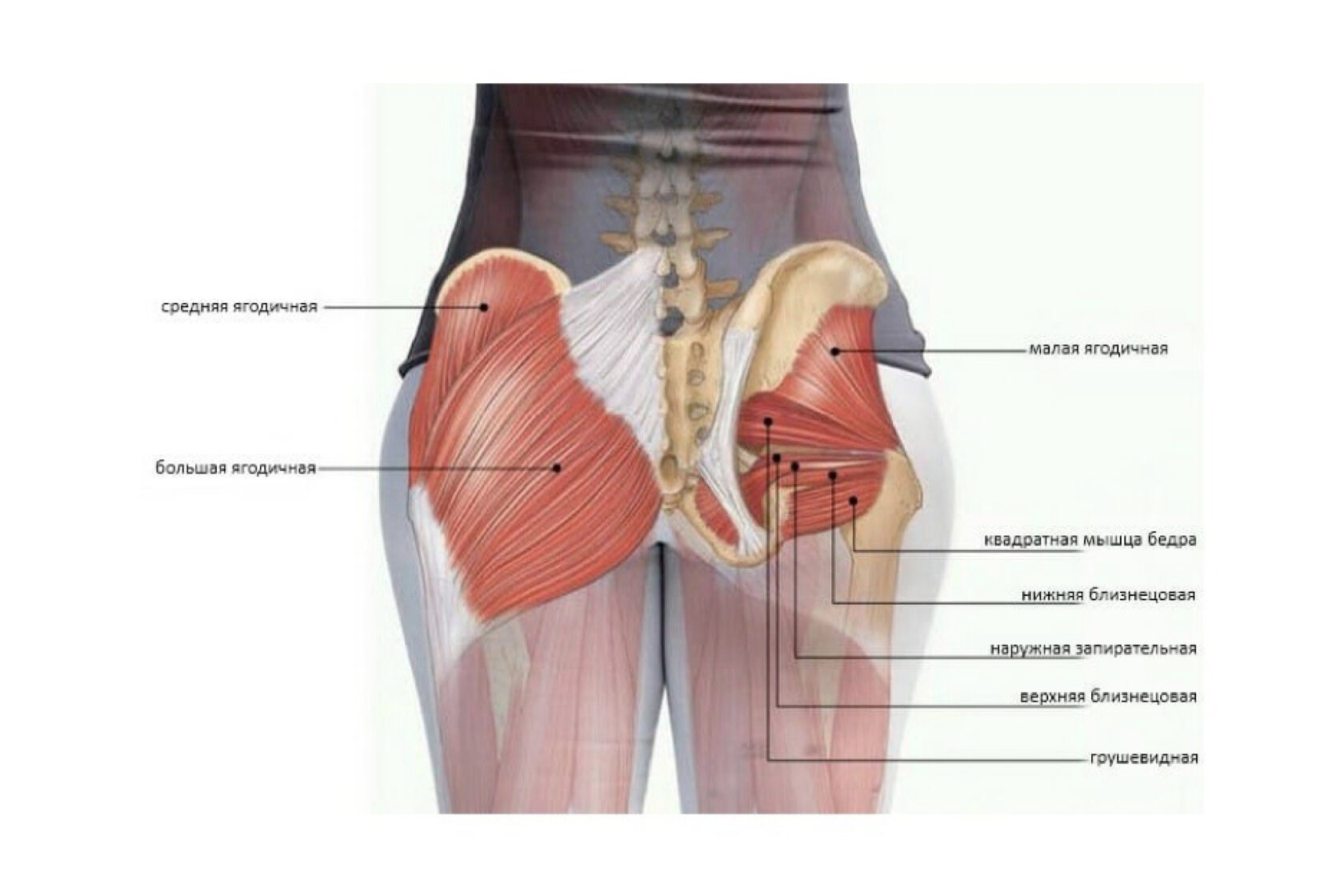
Factors Influencing NAC Preservation in Breast Cancer Surgery
- Tumor size and location
- Lymph node involvement
- Genetic factors
- Patient preferences
- Surgical expertise
Advances in Breast Reconstruction Techniques
Recent advancements in breast reconstruction techniques have significantly improved outcomes for patients undergoing mastectomy. These innovations allow for more natural-looking results and better preservation of breast aesthetics.
How have breast reconstruction techniques evolved? Modern breast reconstruction methods focus on preserving as much natural breast tissue as possible, including the skin envelope and inframammary fold. When combined with nipple-sparing techniques, these approaches can achieve remarkably natural-looking results.
Innovative Breast Reconstruction Approaches
- Immediate reconstruction during mastectomy
- Use of tissue expanders and implants
- Autologous tissue reconstruction (e.g., DIEP flap)
- Fat grafting for contour refinement
- 3D nipple tattooing for NAC recreation
Understanding the complex anatomy of the nipple-areola complex and breast ducts is crucial for both medical professionals and patients. This knowledge informs treatment decisions, surgical techniques, and expectations for breast cancer patients undergoing mastectomy and reconstruction. As our understanding of breast anatomy continues to evolve, so too will our ability to provide better outcomes and quality of life for those affected by breast cancer.
![]()
The preservation of the nipple-areola complex in breast cancer surgery represents a significant advancement in the field of oncoplastic surgery. By maintaining this crucial anatomical feature, surgeons can help patients retain a sense of normalcy and body integrity following mastectomy. However, it’s important to note that nipple-sparing procedures are not appropriate for all patients, and careful evaluation is necessary to ensure oncological safety.
Research into nipple and breast duct anatomy continues to refine our understanding of these structures. This ongoing investigation may lead to further improvements in surgical techniques and treatment outcomes. For instance, detailed mapping of ductal networks could potentially allow for more precise tumor localization and targeted treatments in the future.
The role of the nipple-areola complex extends beyond its physiological functions. For many individuals, the NAC is an integral part of their body image and sexual identity. Recognizing this psychological importance has led to increased efforts in developing techniques to preserve or reconstruct the NAC whenever possible during breast cancer treatment.

Advancements in imaging technologies have also contributed to our understanding of nipple and breast duct anatomy. High-resolution ultrasound, MRI, and other imaging modalities allow for detailed visualization of breast structures, aiding in both diagnosis and surgical planning. These tools have become invaluable in assessing the feasibility of nipple-sparing procedures and identifying potential contraindications.
The embryonic development of the nipple and breast provides insights into potential congenital anomalies and variations in breast anatomy. Understanding this developmental process can help clinicians better diagnose and manage congenital breast conditions, as well as inform genetic counseling for inherited breast disorders.
As our knowledge of nipple function and breast duct anatomy continues to grow, it opens up new avenues for research into breast health and disease. For example, studying the microenvironment of the nipple and surrounding tissues could lead to improved methods for early detection of breast cancer or novel therapeutic approaches.
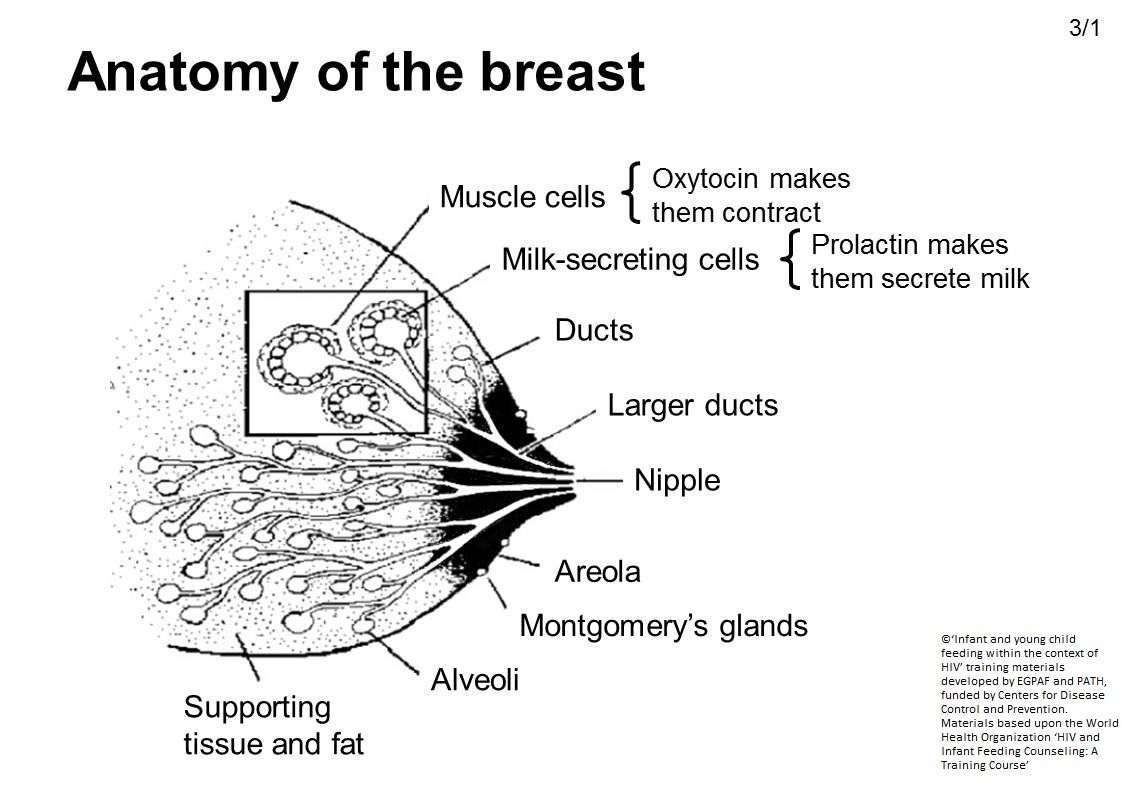
The connection between nipple anatomy and lactation is another area of ongoing research. Understanding the intricate structure of milk ducts and their relation to the nipple can help address breastfeeding challenges and support maternal-infant health. This knowledge is particularly relevant in cases where breast surgery has been performed, as it can inform strategies to preserve or restore lactation function.
Innovations in tissue engineering and regenerative medicine hold promise for the future of breast reconstruction, including the potential for creating functional nipple-areola complexes. These advancements could revolutionize post-mastectomy care, offering patients even more natural and physiologically similar outcomes.
The study of nipple and breast duct anatomy also has implications for non-cancerous breast conditions. Conditions such as ductal ectasia, nipple discharge, and benign breast lesions can be better understood and managed with a comprehensive knowledge of breast anatomy.
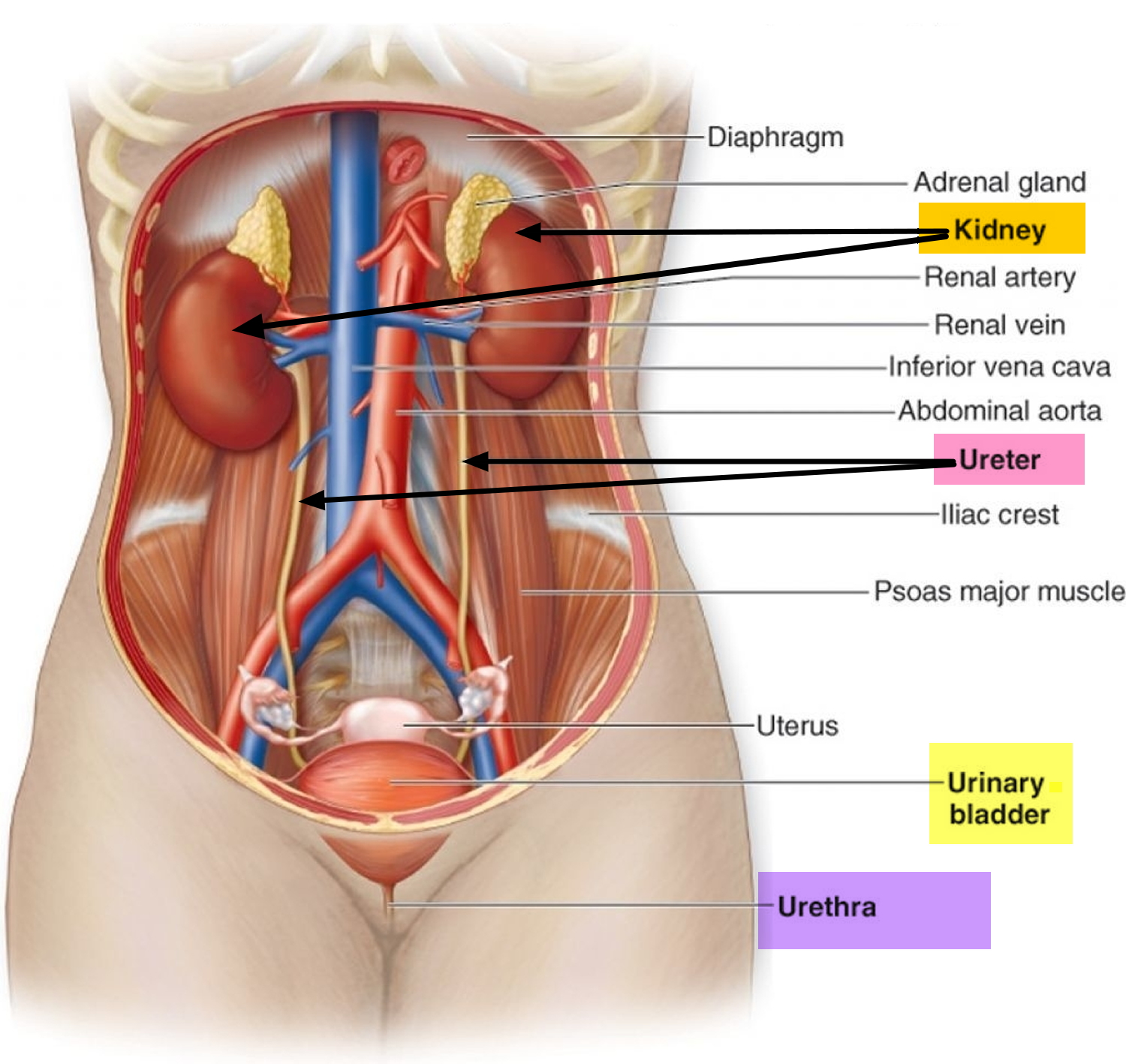
In conclusion, the anatomy of the nipple and breast ducts is a complex and fascinating subject with far-reaching implications for breast health, cancer treatment, and patient care. As research in this field progresses, it will undoubtedly lead to further improvements in breast cancer diagnosis, treatment, and reconstruction techniques, ultimately benefiting countless patients worldwide.
Anatomy of the nipple and breast ducts
Gland Surg. 2016 Feb; 5(1): 32–36.
doi: 10.3978/j.issn.2227-684X.2015.05.10
,1,2,3 and 4
Author information Article notes Copyright and License information Disclaimer
Over time, variations of mastectomy came up and started allowing the oncological safety and the possibility of an immediate breast reconstruction. Nipple sparing mastectomy (NSM) procedures have strongly increased in frequency and have become one of the best alternatives to treat breast cancer, also improving overall aesthetic outcomes and the achievement of contralateral breast symmetry. The nipple areola-complex (NAC) must be considered the identity of the breast concerning self-esteem of patients. This paper will remind the main anatomical topics around the nipple and breast ducts.
Keywords: Breast, breast conserving treatment, mastectomy, mammoplasty, nipple, anatomy, breast cancer
Over time, variations of mastectomy came up and led to enhance the oncological safety and the possibility of an immediate breast reconstruction. Those techniques permit the conservation of skin, inframammary fold and specially the nipple areola complex (NAC) to achieve better outcomes.
Those techniques permit the conservation of skin, inframammary fold and specially the nipple areola complex (NAC) to achieve better outcomes.
Nowadays the number of publications describing a nipple sparing mastectomy (NSM) has strongly increased. Regarding self-esteem the nipple must be considered the identity of the breast. Therefore, in order to increasing safe indications of sparing NAC this paper will revise the main anatomical topics around the nipple and breast ducts.
Several important remarks on the NAC anatomy were made by Sir Astley Cooper [1840]. Over the last 160 years some of the anatomy knowledge acquired has changed (2) since Cooper’s original work. For example, the glandular tissue is depicted as 15-20 lobes radiating out from the nipple, whereas Cooper stated that he observed up to 22 ducts leading to the nipple but considered that many of these ducts were not functional and that there were normally fewer than 12 patent ducts opening at the nipple.
Actually, the breast is described as being composed of glandular and adipose tissue held together by a loose framework of fibers called Cooper’s ligaments. Histological studies demonstrate that the lobes are composed of lobules, which consist of clusters of alveoli containing mammary secretory epithelial cells (3). The alveoli are connected to very small ducts that join to form larger ducts draining the lobules. These larger ducts finally merge to a unique duct for each lobe. Under the areola, this single duct is depicted as widening into a lactiferous sinus before narrowing at the base of the nipple and terminating at its orifice on the surface of the nipple (1,4). Adipose tissue of the breast is situated between lobes rather than within lobules.
Histological studies demonstrate that the lobes are composed of lobules, which consist of clusters of alveoli containing mammary secretory epithelial cells (3). The alveoli are connected to very small ducts that join to form larger ducts draining the lobules. These larger ducts finally merge to a unique duct for each lobe. Under the areola, this single duct is depicted as widening into a lactiferous sinus before narrowing at the base of the nipple and terminating at its orifice on the surface of the nipple (1,4). Adipose tissue of the breast is situated between lobes rather than within lobules.
The beginning of mastogenesis occurs around the sixth week of development. At 9 months there is a clear linear elevation, called “milk line”. By the eighth week, the mammary gland is formed from the thickening located in the epidermic “milk line” in the area of the final breast. There is a proliferation of basal cells that invade the underlying mesoderm and at the same time, it will occur a regression of mammary segment, yielding papillary primordium. After the 31st week of intrauterine life, papillary bag suffer occlusion, forming the NAC. The nipple will appear at time of birth.
After the 31st week of intrauterine life, papillary bag suffer occlusion, forming the NAC. The nipple will appear at time of birth.
The areola is recognized by forming a circular area free of hair sketches, also appearing branched glands around (Montgomery).
These anomalies could be classified into multiple conditions.
Accessory nipple. One to five percent of the population, equal incidence in male and females. Usually found in the inframammary region, and are prone to the same diseases as normal nipples. Excision is only indicated for cosmetic purposes, discomfort during menstruation, anxiety, pain, or restriction of arm movement (6).
Athelia is characterized by the congenital absence of the nipple areolar complex with the presence of breast tissue (7). This condition can be inherited by autosomal dominant inheritance, or as a part of a syndrome (e.g., Poland’s).
Amastia is the complete absence of breast structures.
Amastia is the absence of breast tissue with preservation of the NAC.

Inverted nipple is a condition where the nipple, instead of pointing outward, is retracted into the breast. In some cases, the nipple will be temporarily protruded if stimulated, but in others, the inversion remains regardless of stimulus. Women and men can have inverted nipples. Most common nipple variations that women are born with are caused by short ducts or a wide areola muscle sphincter (8).
The NAC comprises two basic structures: the areola and the nipple ().
Open in a separate window
Schematic view of nipple areola-complex (NAC).
The areola has a round shape and a varying size, on average 3 to 6 centimeters, normally situated around the forth rib level. It has sebaceous glands that make projections on its surface, forming tubercle of morgani, or areolar glands, which during pregnancy become enlarged giving rise to tubercles of Montgomery.
Some authors believe that such structures represent accessory mammary glands and it has been observed milk secretion output with manual expression of these tubers (this supposition leads some surgeons to prefer the use of the skin sparing mastectomy instead of nipple or areola sparing mastectomies because of oncological concerns).
In the center of the areola emerges a papillar cylindrical formation varying in size, averaging 10 to 12 millimeters (mm) wide by 9 to 10 mm in height. Its skin is similar to the areola, but has no sebaceous glands. It has 10 to 20 corresponding pores as the output of the milk ducts.
The NAC has no subcutaneous tissue. The skin of the nipple rests on a thin layer of smooth muscle, areolar muscle fibers which are distributed in two directions: radial and circular. The muscle of Sappey responsible for circular fibers and the muscle of Meyerholz, formed by the radial fibers.
The areolar muscle is continued in the papilla with longitudinal and circular fibers surrounding the milk ducts along with connective tissue support. Its contraction is responsible for the ejection of secretion in the milk sinuses and for the telotism of the papilla, “mimicking an erection”.
Below the areolar muscle there is a thin layer of fat which disappears as it approaches the papilla. In this pre-mammary fat tissue layer vessels are found running on radiated sense.
Blood supply
The NAC is mainly supplied by internal mammary artery, also known as internal thoracic artery, which is branch of the subclavian artery. Internal mammary artery sends perforating branches along the first, second, third and fourth intercostal spaces, crossing the pectoralis major and irrigating the inner half of the breast, including the NAC. The intercostal arteries, which are branch of the aorta, also cross the pectoralis major and irrigate the deep surface of the breast, complementing the arterial vascularization of the NAC.
Venous drainage of breast is divided into two systems: superficial and deep. The superficial veins run along the anterior surface of the fascia, following the path of areola under the NAC, called venous plexus of Haller.
Recently the use of breast MRIs have become increasingly common in breast cancer work-up. Previously obtained breast MRIs may facilitate oncoplastic surgery by delineating the blood supply to the NAC. Seitz et al. (9) retrospectively reviewed 52 breasts underwent to breast MRI over 1-year period. Blood supply to the NAC was classified into five anatomic zones (“NACsomes”): medial (type I), lateral (type II), central (type III), inferior (type IV) and superior (type V). Twenty-eight breasts had type I only blood supply, 22 breasts had multi-zone blood supply (type I + II, n=20; type I + III, n=2), one breast had type II only blood supply, and a single breast had type III only blood supply. Anatomic symmetry was observed in 96% of patients. Superomedial source vessels supplying the NAC were predominant ().
(9) retrospectively reviewed 52 breasts underwent to breast MRI over 1-year period. Blood supply to the NAC was classified into five anatomic zones (“NACsomes”): medial (type I), lateral (type II), central (type III), inferior (type IV) and superior (type V). Twenty-eight breasts had type I only blood supply, 22 breasts had multi-zone blood supply (type I + II, n=20; type I + III, n=2), one breast had type II only blood supply, and a single breast had type III only blood supply. Anatomic symmetry was observed in 96% of patients. Superomedial source vessels supplying the NAC were predominant ().
Open in a separate window
Schematic view of blood supply of NAC by “NACsomes” (Type I yellow—medial, Type II green—lateral, Type III pink—central, Type IV purple—inferior and Type V orange—superior).
Innervation
The skin surface of the breast is innervated by the first to sixth intercostal nerves and a supraclavicular branch of the superficial cervical plexus. The nipple is innervated by the fourth intercostal nerve. Objective investigations about the real impact of breast size on NAC sensibility threshold should be better clarified. Longo et al. (10) suggested that large and heavy breasts may potentially produce a chronic nerve traction injury, causing an inverse relationship between breast volume and sensibility. Concerning mammoplasty, the fibrotic scar at the areolar edges could be responsible for the progressive sensibility worsening over time 6 to 48 months. Another interesting mentioned phenomenon is neural organization in the somatosensory system after reduction mammoplasty. Phantom sensations are reported after partial and total breast amputation for cancer, possibly due to both rearranging of peripheral nerves and remapping on different subcortical and cortical somatosensory areas.
Objective investigations about the real impact of breast size on NAC sensibility threshold should be better clarified. Longo et al. (10) suggested that large and heavy breasts may potentially produce a chronic nerve traction injury, causing an inverse relationship between breast volume and sensibility. Concerning mammoplasty, the fibrotic scar at the areolar edges could be responsible for the progressive sensibility worsening over time 6 to 48 months. Another interesting mentioned phenomenon is neural organization in the somatosensory system after reduction mammoplasty. Phantom sensations are reported after partial and total breast amputation for cancer, possibly due to both rearranging of peripheral nerves and remapping on different subcortical and cortical somatosensory areas.
Lymphatic drainage
The lymphatic drainage of the breast is carried through superficial and deep plexus. Superficially, there are the areolar plexus and the subareolar plexus of Sappey. The subareolar plexus receives the glandular lymph vessels and they continue towards the papilla and the areolar plexus, finally reaching the lymph nodes into the axilla.
Ramsay et al. used ultrasound imaging to re-investigate the anatomy of the lactating breast. They showed that the mean number of main ducts at base of nipple was 9.6 (range, 6-18) and 9.2 (range, 4-14) for the left breast and right breast, respectively, which was not significantly different. The common sac-like appearance of lactiferous sinuses under the areola was not observed during scanning. The mean number of ducts and the diameter of main ducts were not related to nipple diameter, areola radius or milk production for individual breasts (2).
Characteristics of nipple are an important factor in the success of breast feeding. Minimum nipple length of seven millimeters has shown to be specific for a highly successful rate of breastfeeding (11). Short, flat, or inverted nipples can be related to physical and psychological negative effects for the breastfeeding mother.
It is clear that when a total mastectomy is performed, the removal of the NAC increases the sensation of mutilation, and the risk of tumor involvement should be considered within the spectrum of lumpectomy, skin-sparing mastectomy, and modified-radical mastectomy. Controlled-trials have clearly demonstrated the oncologic equivalence of modified-radical and skin-sparing mastectomies, where the risk of future breast cancer occurrence is low but not zero (12,13).
Controlled-trials have clearly demonstrated the oncologic equivalence of modified-radical and skin-sparing mastectomies, where the risk of future breast cancer occurrence is low but not zero (12,13).
Current reports on NSM are most common to single-institution series. However the number of NSM procedures has increased over the past years. Tumor involvement is reported in over 35% of the patients when tumor size is more than 2 cm, especially when the tumor is situated in the subareolar area (14). NSM can be performed for prophylactic mastectomy and the treatment of selected breast cancer with oncologic safety. The risk of skin and nipple necrosis is a frequent complication of NSM procedure, and it is usually related to the volume of breast removed (15).
Despite varying indications and surgical protocols reports of the development of cancer in the NAC following NSM are remarkably rare. Different aspects should be considered to be a selection criteria for NSM indication as well as primary tumors located outside the areola margins, no nipple retraction or bloody discharge from the nipple, no retro areolar microcalcifications, no inflammatory signs and no retro areolar tumor infiltration at the frozen section (13,16,17). In our experience the most important aspect to allow the indication for a NSM is the negative frozen subareolar biopsy area during the surgery. The rate of a positive subareolar biopsy ranges between 2.2% to 12% (13,18).
In our experience the most important aspect to allow the indication for a NSM is the negative frozen subareolar biopsy area during the surgery. The rate of a positive subareolar biopsy ranges between 2.2% to 12% (13,18).
Tumoral aspects will be important to take into account when considering the indication of adjuvant therapies. Overall, NSM is associated with high patient satisfaction rates (19-22).
The NAC may host benign pathologies, especially during pregnancy and puerperium. In addition, it has an important role in breast surgery when tumors can be resected through an incision that circles the areola (periareolar or “round block technique”). This technique can be used in numerous types of breast surgery. It allows the scar to go up to the periareolar circle which is in itself generally inconspicuous. In cases of tumoral excision, the round block produces a discreet scar and a more regular breast contour (23). Scar in this region maintains good aesthetic. It is recommended that the incisions are made just outside the areola in darker-skinned patients and immediately inside the areola in lighter-skinned patients. This is because the lighter shade of scar tissue.
This is because the lighter shade of scar tissue.
Development of the current practice depends on a solid knowledge. Consistent knowledge of the anatomy of the NAC allows surgeons to perform better surgical procedures decreasing the sensation of mutilation without decreasing the chance of cure. The NAC is undoubtedly the identity of the breast.
The authors appreciate the cooperation of all colleagues in the Breast Unit—Barretos Cancer Hospital.
Conflicts of Interest: The authors have no conflicts of interest to declare.
1. Bannister LH, Berry MM, Collins P, et al, editors. Gray’s Anatomy. 38th ed. New York: Churchill Livingstone, 1995:417-24. [Google Scholar]
2. Ramsay DT, Kent JC, Hartmann RA, et al.
Anatomy of the lactating human breast redefined with ultrasound imaging.
J Anat
2005;206:525-34. [PMC free article] [PubMed] [Google Scholar]
3. Tobon H, Salazar H.
Ultrastructure of the human mammary gland. II. Postpartum lactogenesis.
J Clin Endocrinol Metab
1975;40:834-44. [PubMed] [Google Scholar]
[PubMed] [Google Scholar]
4. Vorherr H. The Breast: morphology, physiology and lactation. London, UK: Academic Press, 1974. [Google Scholar]
5. Franco JM. Mastologia: formação do especialista. 1st ed. São Paulo: Atheneu, 1997. [Google Scholar]
6. Aydogan F, Baghaki S, Celik V, et al.
Surgical treatment of axillary accessory breasts.
Am Surg
2010;76:270-2. [PubMed] [Google Scholar]
7. Trier WC. Complete breast absence. Case report and review of the literature.
Plast Reconstr Surg
1965;36:431-9. [PubMed] [Google Scholar]
8. Alexander JM, Grant AM, Campbell MJ. Randomised controlled trial of breast shells and Hoffman’s exercises for inverted and non-protractile nipples.
BMJ
1992;304:1030-2. [PMC free article] [PubMed] [Google Scholar]
9. Seitz IA, Nixon AT, Friedewald SM, et al.
“NACsomes”: A new classification system of the blood supply to the nipple areola complex (NAC) based on diagnostic breast MRI exams.
J Plast Reconstr Aesthet Surg
2015;68:792-9. [PubMed] [Google Scholar]
[PubMed] [Google Scholar]
10. Longo B, Campanale A, Farcomeni A, et al.
Long-term sensory recovery of nipple-areola complex following superolateral pedicled reduction mammaplasty.
Plast Reconstr Surg
2013;132:735e-742e. [PubMed] [Google Scholar]
11. Puapornpong P, Raungrongmorakot K, Paritakul P, et al.
Nipple length and its relation to success in breastfeeding.
J Med Assoc Thai
2013;96
Suppl 1:S1-4. [PubMed] [Google Scholar]
12. Petit JY, Veronesi U, Orecchia R, et al.
Nipple-sparing mastectomy in association with intra operative radiotherapy (ELIOT): A new type of mastectomy for breast cancer treatment.
Breast Cancer Res Treat
2006;96:47-51. [PubMed] [Google Scholar]
13. Spear SL, Willey SC, Feldman ED, et al.
Nipple-sparing mastectomy for prophylactic and therapeutic indications.
Plast Reconstr Surg
2011;128:1005-14. [PubMed] [Google Scholar]
14. Agarwal S, Agarwal S, Neumayer L, et al.
Therapeutic nipple-sparing mastectomy: trends based on a national cancer database.
Am J Surg
2014;208:93-8. [PubMed] [Google Scholar]
15. Chirappapha P, Petit JY, Rietjens M, et al.
Nipple sparing mastectomy: does breast morphological factor related to necrotic complications?
Plast Reconstr Surg Glob Open
2014;2:e99. [PMC free article] [PubMed] [Google Scholar]
16. Vlajcic Z, Zic R, Stanec S, et al.
Nipple-areola complex preservation: predictive factors of neoplastic nipple-areola complex invasion.
Ann Plast Surg
2005;55:240-4. [PubMed] [Google Scholar]
17. Lohsiriwat V, Petit J.
Nipple Sparing Mastectomy: from prophylactic to therapeutic standard.
Gland Surg
2012;1:75-9. [PMC free article] [PubMed] [Google Scholar]
18. Kneubil MC, Lohsiriwat V, Curigliano G, et al.
Risk of locoregional recurrence in patients with false-negative frozen section or close margins of retroareolar specimen in nipple-sparing mastectomy.
Ann Surg Oncol
2012;19:4117-23. [PubMed] [Google Scholar]
19. Yueh JH, Houlihan MJ, Slavin SA, et al.
Nipple-sparing mastectomy: evaluation of patient satisfaction, aesthetic results, and sensation.
Ann Plast Surg
2009;62:586-90. [PubMed] [Google Scholar]
20. Didier F, Arnaboldi P, Gandini S, et al.
Why do women accept to undergo a nipple sparing mastectomy or to reconstruct the nipple areola complex when nipple sparing mastectomy is not possible?
Breast Cancer Res Treat
2012;132:1177-84. [PubMed] [Google Scholar]
21. Didier F, Radice D, Gandini S, et al.
Does nipple preservation in mastectomy improve satisfaction with cosmetic results, psychological adjustment, body image and sexuality?
Breast Cancer Res Treat
2009;118:623-33. [PubMed] [Google Scholar]
22. Zucca-Matthes G, Manconi A, da Costa Viera RA, et al.
The evolution of mastectomies in the oncoplastic breast surgery era.
Gland Surg
2013;2:102-6. [PMC free article] [PubMed] [Google Scholar]
23. Benelli L.
A new periareolar mammaplasty: the “round block” technique.
Aesthetic Plast Surg
1990;14:93-100. [PubMed] [Google Scholar]
16 interesting facts to know
Share on PinterestNipples come in many shapes, colors, and sizes, and they can change shape during pregnancy.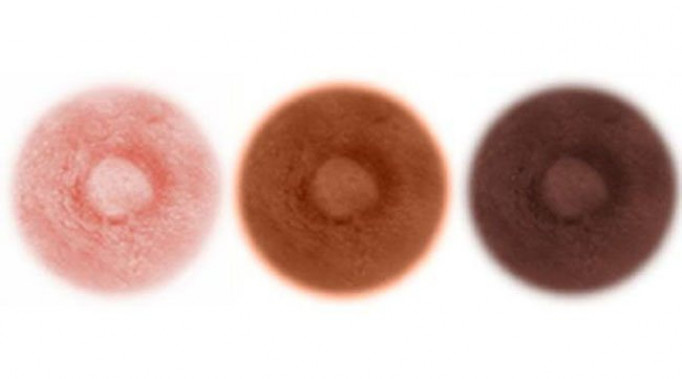
Here are some facts about nipples:
1. The nipples can be an erogenous zone for both sexes.
According to a 2020 article, nipple stimulation plays an important role in the sexual satisfaction of about 80% of females. The authors concluded that using a topical formulation that stimulates the nipples 30 minutes before sexual activity can improve orgasmic satisfaction, strength, and pleasure.
Although male breasts are less well-studied, a 2017 article states that nipples are an erogenous zone for males.
2. Nipples can be hairy.
According to Planned Parenthood, it is normal to have hairs around the nipples.
Hair can be present around the nipples in both males and females.
3. Why do males have nipples?
In mammals, once an embryo has formed, it has the potential to become either male or female.
The nipples form very early in gestation, which is why males also have nipples.
The genes responsible for the development of reproductive organs do not become activated until a later stage.
4. Accessory nipples exist.
Sometimes, a person may have an extra nipple or set of nipples.
According to the Genetic and Rare Diseases Information Center, these are known as supernumerary nipples, and they are a common congenital abnormality. They most frequently occur along the embryonic milk lines, just like in other mammals.
One 2016 article estimates that roughly 1–5% of the population has a supernumerary nipple.
Although most people have just one extra nipple, there have been at least two cases of people with seven nipples.
5. Nipples can occur anywhere on the body.
Although accessory nipples typically occur along the mammary crests, or milk line, they can appear anywhere on the body.
There has been a case of an accessory nipple occurring on the foot, for example.
6. Some people are born without nipples at all.
Known as athelia, this is a rare condition in which a person is born without any nipples.
7.
 A set of nipples holds a Guinness World Record.
A set of nipples holds a Guinness World Record.
According to the Guinness World Records, in 2013, a person used their nipples to lift 71.87 pounds.
8. There are different types of nipples.
Nipples can be flat, protruding, or inverted.
According to the Center for Young Women’s Health, roughly 10–20% of females have an inverted nipple on at least one breast.
Although this will not affect a person’s health, it is important to keep inverted nipples clean.
9. Breastfeeding is still possible with inverted nipples.
Although inverted nipples can make it more difficult to breastfeed, they do not make it impossible.
According to the World Health Organization (WHO), an inverted nipple can sometimes be nonprotractile, meaning that it does not stretch out when a person pulls it. Instead, the tip goes inward.
In these cases, it is often more difficult for the baby to attach to the nipple. However, protractility often improves during pregnancy and in the first week or so after a baby is born. Otherwise, there are alternative ways to breastfeed successfully with inverted nipples.
Otherwise, there are alternative ways to breastfeed successfully with inverted nipples.
10. Breastfeeding females can spontaneously leak milk if they hear babies crying.
This effect is called the let-down reflex.
The let-down reflex occurs when the nerves in a person’s breast send signals that release the milk to the milk ducts so that it can start to come out of the nipples.
This mechanism is important for breastfeeding or expressing milk, but it can also happen at other times. For instance, it can happen when a female hears their baby crying or even thinks about their baby. It can also sometimes happen when another baby cries.
11. Bumps on the areolae are normal.
The small bumps on areolae are also known as the Montgomery glands.
These glands secrete oil to cleanse the nipple opening and prevent the chapping and cracking of the nipple that often occurs due to breastfeeding.
According to an older study, there is also evidence to suggest that this secretion may attract newborns to the nipples.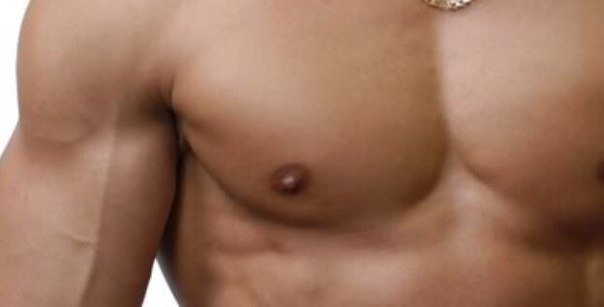
Although these bumps are normal, a person should see a doctor if they become inflamed or secrete brown fluid.
12. Breast milk can come out of multiple places.
There are between 10 and 20 perforations in the skin of the nipples, called nipple pores, from which the milk exits the body.
When breast milk is pumped, it can either look like a single stream or be visibly coming from different “holes” in the nipple.
13. Nipples can change shape during pregnancy.
One study demonstrated that during pregnancy, nipple length and width, as well as areola width, could increase significantly.
However, if a person notices that their nipples have changed drastically, and they are not pregnant, it is important that they visit their doctor.
The Centers for Disease Control and Prevention (CDC) advise that changes to the nipples could be a sign of breast cancer.
14. Nipple cancer is a rare form of cancer, but it can happen.
Nipple cancer, also known as Paget’s disease, is a rare condition associated with breast cancer. It affects the nipple and the areola.
It affects the nipple and the areola.
According to the National Cancer Institute, about 1–4% of breast cancer cases involve Paget’s disease.
This condition can also affect males, but it is much more common among females.
Although doctors do not entirely understand what causes Paget’s disease of the breast, they do have theories.
The most widely accepted theory is that cancer cells from a tumor inside the breast travel through the milk ducts to the nipple and areola. This theory would explain why this cancer is so rare in males.
15. People can get nipple tattoos.
During a mastectomy, the surgeon may sometimes need to remove the nipple too.
After undergoing this procedure, some people may opt for nipple reconstruction. The options include using a nipple prosthetic, a skin graft, or a tattoo.
16. Nipple stimulation can induce labor.
Stimulating the nipples may help the onset of labor.
According to a 2018 study, oxytocin can help induce labor. Nipple stimulation produces oxytocin.
Nipple stimulation produces oxytocin.
In the same study, 3 days of breast stimulation caused oxytocin levels to increase.
Other research has shown that nipple stimulation can also have an effect on the duration of labor. A 2015 study found that stimulating the nipples during labor shortened the first stage of labor to an average of 3.8 hours.
Learn more about nipple stimulation and labor here.
Nipples can be a good indication of a person’s health.
Although many factors can affect the nipples, if a person notices any discharge or changes in this part of the body, they should see a doctor.
Why do men have nipples? School ny genetics. Each human cell has 46 chromosomes – densely folded DNA molecules. The only exception to this rule are sperm and eggs, because they have half the number of chromosomes. When the sex cells merge, an embryo is formed, which receives equal DNA from mom and dad.
The first 22 pairs of chromosomes in men and women are absolutely no different. The child simply receives each gene in duplicate. This is beneficial for a person: they can be different, and if, for example, one option is broken, then the cell will use the backup. But the last pair is the sex chromosomes, X and Y. The egg always carries the X chromosome, and the sperm can add to it the second of the same (in which case the couple will have a girl) or a Y chromosome (and then the parents get a boy).
The child simply receives each gene in duplicate. This is beneficial for a person: they can be different, and if, for example, one option is broken, then the cell will use the backup. But the last pair is the sex chromosomes, X and Y. The egg always carries the X chromosome, and the sperm can add to it the second of the same (in which case the couple will have a girl) or a Y chromosome (and then the parents get a boy).
Everyone has at least one X chromosome, because it carries a huge amount of necessary genes. With a variety of genetic anomalies, fertilized eggs can appear with any set of sex chromosomes, but without the X chromosome, the embryo simply cannot develop.
But a set of X0 chromosomes (one sex chromosome), or XXX, or XXY, or XYY will lead to the birth of a full-fledged person, although not completely healthy. Survival does not depend on the Y chromosome. Its only function is to turn a man into a man.
Immediately after conception, the Y chromosome is inactive, and all embryos begin to develop in the same way. Only in the second month of embryonic development, her genes turn on. Then the primary sex glands in future men turn into testes and begin to produce androgens. Under the influence of these hormones, a lot of rearrangements occur that irreversibly change the basic model of a person: instead of the large labia, a scrotum is formed, instead of a clitoris, a penis. But the most important thing is that the centers of regulation of the endocrine system in the brain are formed according to the male type, so in adolescence a person will no longer be able to grow beautiful breasts.
Only in the second month of embryonic development, her genes turn on. Then the primary sex glands in future men turn into testes and begin to produce androgens. Under the influence of these hormones, a lot of rearrangements occur that irreversibly change the basic model of a person: instead of the large labia, a scrotum is formed, instead of a clitoris, a penis. But the most important thing is that the centers of regulation of the endocrine system in the brain are formed according to the male type, so in adolescence a person will no longer be able to grow beautiful breasts.
Nevertheless, in the first weeks of embryonic development, the body nevertheless developed according to the basic, female type, and therefore the nipples had time to appear. Moreover, the breast retained the ability to respond to female sex hormones, so if there are many of them, the male breast can still grow a little.
Did you know that…
Males of some species of fruit bats (large bats) have fully developed mammary glands. They can feed their young with milk, like females. As a rare pathology, lactating mammary glands are also known in other male mammals, including humans.
They can feed their young with milk, like females. As a rare pathology, lactating mammary glands are also known in other male mammals, including humans.
Reading today
Dementia test in 30 seconds: how many differences did you find in the photo?
Quiz: choose a house and we’ll tell you what profession will bring you wealth
Quiz: are you sure you can distinguish colors correctly? Only 2% of people manage without mistakes
Test: the first thing you see in the picture will tell you about the hidden features of your personality
Vigilance test: count all the circles in the picture, but don’t make a mistake
Why do men need nipples – Rambler/news
Many are interested in why the representatives of the stronger sex need such a seemingly unnecessary part of the body as nipples. In women, they perform a very specific role – they facilitate the process of feeding newborns. Men, due to the lack of such a function, do not seem to need this rudimentary organ. Then, quite legitimately, the question arises why nature supplies males with nipples.
Men, due to the lack of such a function, do not seem to need this rudimentary organ. Then, quite legitimately, the question arises why nature supplies males with nipples.
© Smart
Erogenous zone
Video of the day
In some men, the nipples are one of the erogenous zones, irritation of which enhances sexual arousal. But this does not apply to everyone. About 42% of gentlemen regard nipple touching as unpleasant and even annoying. There are those for whom this zone does not play any role in sexual terms. So it is impossible to call the sensitivity of the nipples and their role in sexual relations a sufficient reason for the mandatory presence of this organ in men.
Prenatal development
In fact, the nipples are a common and obligatory organ for both males and females due to the peculiarities of intrauterine development. They begin to form in the embryo before the seventh week. The first 6-7 weeks, all human embryos develop according to a common model – the female one. At this time, the main organs and parts of the body are laid: the rudiments of arms, legs, eyes, ears, nipples and everything else, except for the genitals.
At this time, the main organs and parts of the body are laid: the rudiments of arms, legs, eyes, ears, nipples and everything else, except for the genitals.
Only after the seventh week, serious changes occur in the body of the unborn child, provoking the formation of genital organs. If the embryo is male, a hormone called androsterone begins to be produced in the blood. Under its influence, the genital tubercle gradually turns into a penis, and the folds in the inguinal region into the scrotum.
The nipples do not go anywhere, but simply remain with the fetus as an obligatory attribute of the genus of mammals. In addition to the actual nipples, all boys from the first seven weeks of “female” development also have a little tissue of the mammary glands. It is for this reason that at puberty, due to hormonal changes in young men, the chest swells slightly in the nipple area.
Evolutionary process
There is an opinion that over time the nipples in men can completely disappear, just as the human tail disappeared, leaving only the coccygeal bone as a “memento”.

